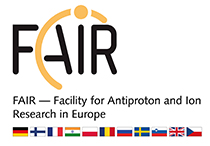Reaction studies with ion-storage rings
Goethe-Universität Franfurt am Main
A universal COLTRIMS reaction microscope (CRY-RIMS) is being developed for the first FAIR-ion storage ring, CRYRING@ESR. The CRY-RIMS measures the emission direction and energy of all charged fragments (electrons and ions) from a reaction simultaneously. The charged fragments are guided by specially optimized electric and magnetic fields of a spectrometer onto large area spatially and temporally resolving detectors. The detectors in combination with fast electronics and data acquisition are also capable of detecting multiple particles simultaneously. The three-dimensional momentum vectors of all fragments can be reconstructed from the measured impact positions and flight times. The use in the ion storage ring requires a base pressure of low 10-11 mbar in combination with a supersonic gas target of variable target density. Initially planned to use the available gas target from CRYRING@ESR, an own versatile and optimized gas target is being developed. The range of possible investigations includes individual atoms, simple and complex molecules (which may need to be evaporated from the liquid phase), and clusters of various compositions and sizes (e.g. doped helium droplets). The scientific field covered by the planned experimental setup includes both fundamental atomic physics reactions and novel investigations into more complex systems. On the side of fundamental atomic physics research, some of the topics proposed in the "CRYRING@ESR Physics Book" will be partially covered. Moreover, the door will also be opened to more complex systems, such as molecules and clusters. Due to the extremely short interaction time of a few attoseconds between the target and projectile, the molecular geometry can be frozen and measured in a unique way. This allows, for example, investigations of the handedness of individual chiral molecules to be taken to a new level and experiments on dynamic structural changes to be performed. The projectile's multiple interactions with the target enable "pump-probe" experiments on larger molecules at extremely short time scales that cannot be achieved with any other technique. With the broad spectrum of possible experiments, the optimization to the certain needs of each experiment is a key for successful experiments. Therefore, the spectrometer configuration will be as versatile and flexible as possible



